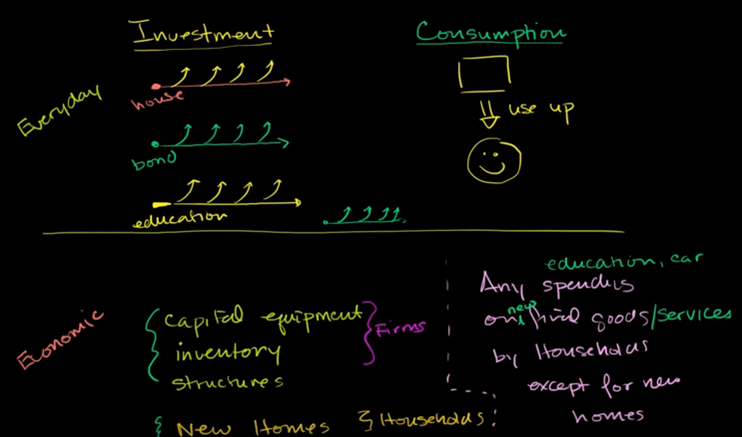Reading: Investment and Consumption

In economics, consumption refers to activities that directly provide utility to people, whereas investment refers to the accumulation of capital goods -- inputs that contribute to production over a (more or less) long life span. All production is ultimately aimed at enhancing someone’s utility, so you might reasonably think of the distinction between consumption and investment as the difference between “utility now” and “(more) utility later.”
Consumption goods are divided between consumer durables and non-durables. Non-durables (think food) are used up in the process of consuming them, whereas durables (furniture, residential housing, cars, appliances, books, etc.) are not; instead, they provide a flow of utility over time. In that sense, the same object could be an investment good or a consumer durable, depending on how it was used: for example, a refrigerator used to keep a family’s food fresh would be counted as a consumer durable, whereas if it were used by a shop selling food to the public, it would be counted as part of that shop’s capital.
Another borderline issue applies to education. To the extent that the student is learning skills that will allow her to be more productive and thus earn a higher income in the future, economists would describe that as investment in her human capital. In contrast, if she’s simply taking courses because she enjoys them or finds them intellectually stimulating, she’s engaged in consumption. In practice, it can be quite difficult to tease these two motives apart.
Last modified: Tuesday, August 14, 2018, 10:09 AM
